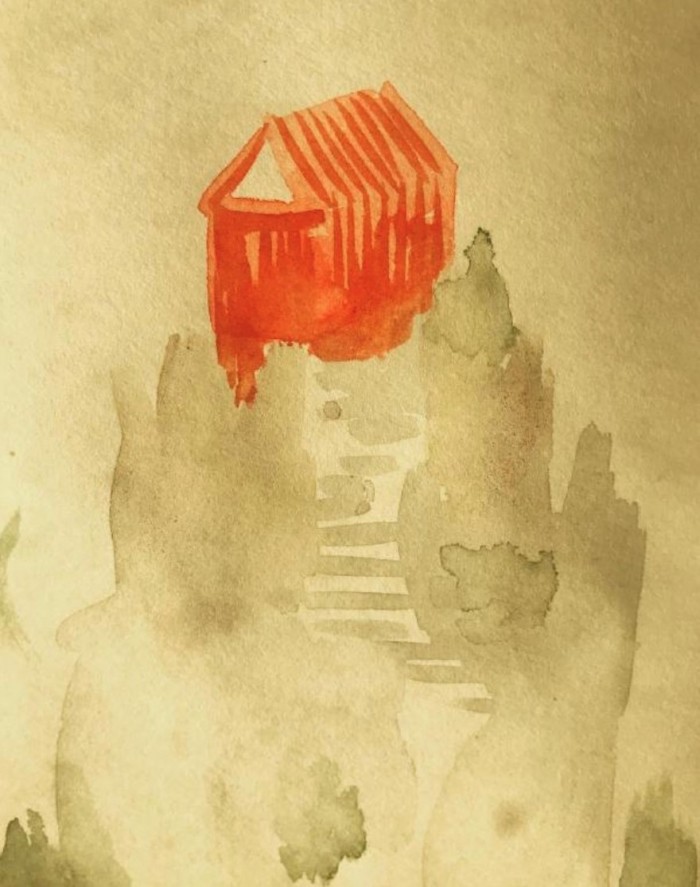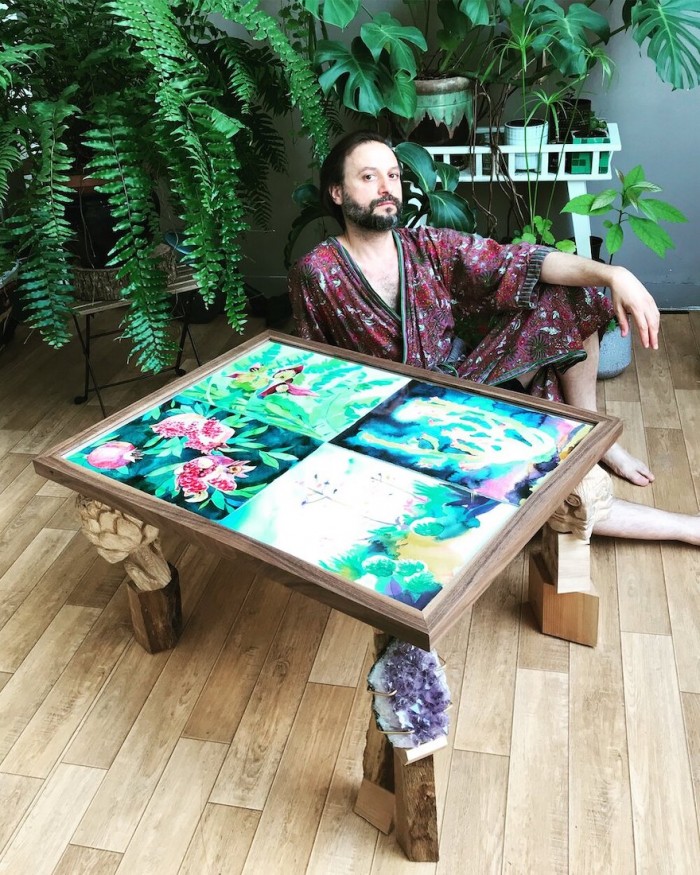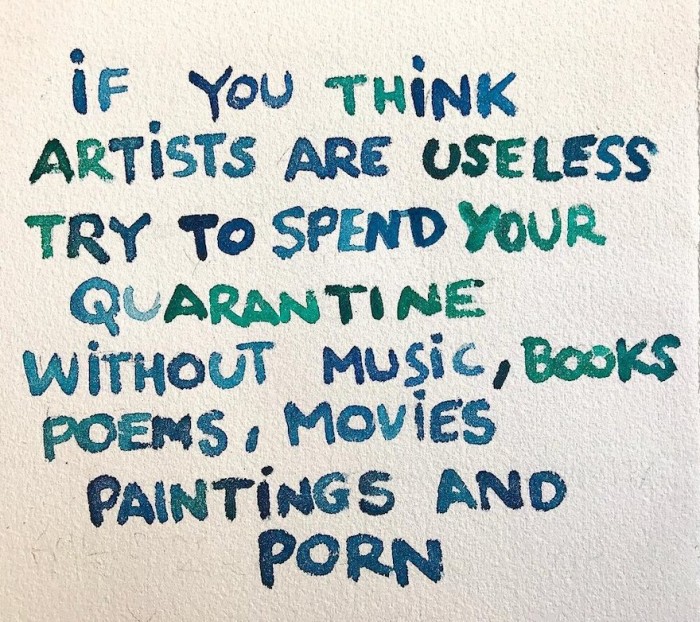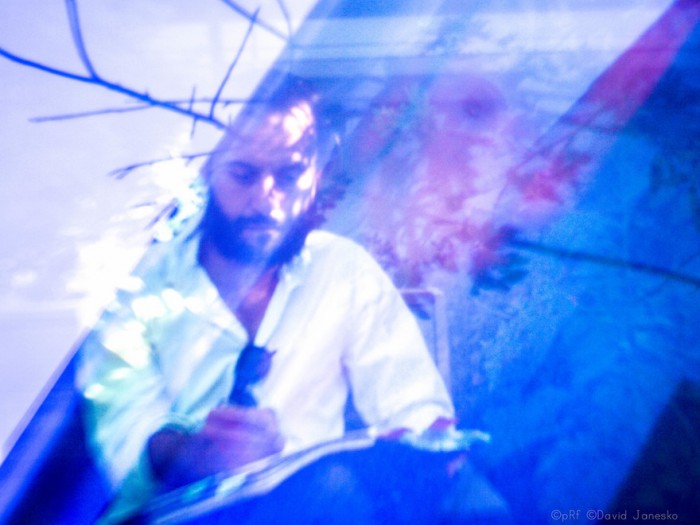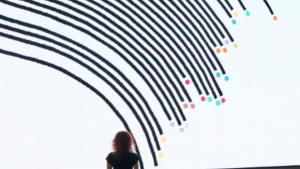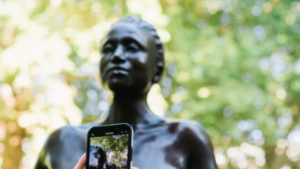Italian artist, poet, choreographer and gardener, Alex Cecchetti is well known for artworks that defy classification. His latest project, Sentiero, which translates into ‘pathway’ in English, is no exception.
The artist will create a pathway through the Gherdëina/Val Gardena, a valley in the Dolomites, taking participants on a journey to remind them they are an integral part of nature, not just intimately connected to it.
“This boundless feeling is what I want to share with the people who will walk with us,” says Cecchetti. “We will walk until we can no longer identify with our jobs or our family role; we will forget our own names. Only then, once our little identity is lost, will we recognise ourselves in the trees, the rocks, the flight of the sparrow.”
The Dolomites – an Alpine destination popular with hikers and nature lovers, and a UNESCO World Heritage Site – hold a special fascination for the artist. “They are mountains and at the same time they are islands and were once animals and bones,” he explains. “They were formed in a faraway tropical ocean, by the sediments of rivers and organic materials like fish and corals that were never here in Val Gardena. Even rocks and mountains travel.”
Cecchetti likens the Dolomites – the setting of Sentiero – to “pilgrims with no final destination” which “help you think about death as just another transformative device of life”.
The Sentiero experience will involve walking through the extraordinary landscape accompanied by local guides using choreography, songs, poetry, paintings and nature itself to put visitors in touch with seasonal rhythms. Installation elements serve as ‘stations’ along the path, where visitors can commune with trees or observe astronomical events.
Finally, visitors are guided into the heart of the work – an embroidered YURTA, painted with natural dyes made from local plants and inspired by nomadic Mongolian and Afghan communities. Here, visitors will shelter overnight and eat a meal of mountain herbs previously encountered along the path.
While visitors take in the landscape, they will have the chance to reflect on the concept of borders – such as the border between the North and South Tyrol, for example – and how arbitrary these demarcations really are.
Cecchetti says Sentiero creates a large ecosystem for exploration. His poetic explanation of the project attempts to sum up the experience:
“We have established an intricate net of partners and collaborators,” he explains. “There are people who work on the costumes for the guides who will walk with you along the path, there are guides who come from these valleys, there is Curdin from Somalgor who creates incense, and a chef from the mountain who will work on a soup made of all the herbs that we cross on the walk. And there are the plants that will end up decorating our yurt, where finally we can fall asleep, in a bed of mountain herbs and hay. And in sleep, there will of course be the dream – one of the best collaborators we have. All of this makes me feel like a mushroom, a little piece of mycelium trying to connect all these people, all these artisans, and all these dreams. Now that I am a mushroom, I often ask myself whether I have ever been a human. Was I ever myself?”
The intriguing concept of Sentiero was conceived between 2020 and 2021, when Cecchetti spent nine months on the Greek island of Kastellorizo. Due to lockdowns, it was inhabited by only 300 people and some military, which provided a real sense of isolation. Cecchetti explored the island every day, hiking through the dry, rocky hills.
Initially, his mind was full of anxieties and nostalgia; after hiking, he felt only peace, observing hawks hunting swallows, resting in the shade of olive trees, and feeling the wind and sun on his skin. “I realised that our identities are created with others and can be rearranged, depending on where we are, and who we are with,” he explains. The “inebriating confusing” we experience in the world can be swept away.
The multidimensional artist says his work is motivated by love. “I am crazy in love, and I do everything for love, from watercolours to performances to choreography,” he says, adding that the universe is so seductive that humans do anything to acquire knowledge about it. “Our efforts are like the mating dances of certain birds,” he quips.
There is a spiritual quality to Sentiero, which is one of the winning projects of the 10th edition of the Italian Council, a programme for the international promotion of Italian art. Curated by Valerio Del Baglivo, the project will travel to Austria, Sweden, Germany, the United Kingdom and Switzerland, and will eventually become part of the permanent collection of the Museum of Contemporary Art (MUSEION) in Bolzano, Italy.
According to Doris Ghetta, the director of the Biennale, "With Sentiero by Alex Cecchetti, we have captured the zeitgeist of this historic era, in which the importance of having an immaterial collective experience is once again crucial, while traces will remain in the landscape and in us in the future.”
Sentiero requires a smartphone App to access every facet of the performance and installation. The aim is to transform the consciousness of the participants, allowing them to immerse themselves in a journey that is as close to a vision quest as modern audiences can get.
For more information on Biennale Gherdëina, which runs from 20 May – 25 September 2022, visit https://www.biennalegherdeina.it.
Read more:
Guerilla art installations by Luzinterruptus.
Future Sketches - an interactive installation by Zach Lieberman.
Neri Oxman’s installation exploring the possibilities of melanin.
Alex Checchetti, Mountain Cabin, 2021. Project realized with the support of Italian Council (2021).
Credits: Alex Cecchetti

